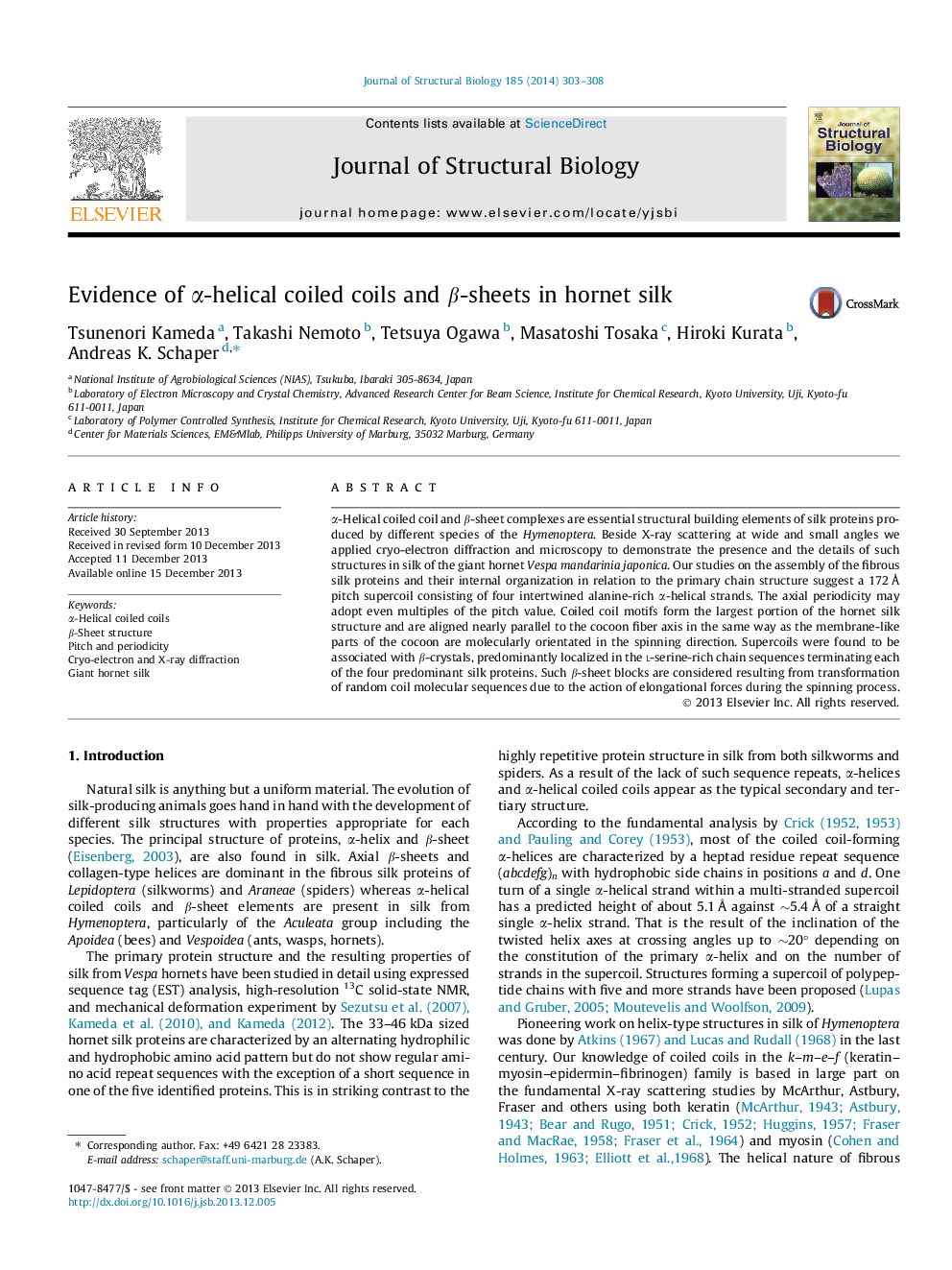| Article ID | Journal | Published Year | Pages | File Type |
|---|---|---|---|---|
| 5914020 | Journal of Structural Biology | 2014 | 6 Pages |
Abstract
α-Helical coiled coil and β-sheet complexes are essential structural building elements of silk proteins produced by different species of the Hymenoptera. Beside X-ray scattering at wide and small angles we applied cryo-electron diffraction and microscopy to demonstrate the presence and the details of such structures in silk of the giant hornet Vespa mandarinia japonica. Our studies on the assembly of the fibrous silk proteins and their internal organization in relation to the primary chain structure suggest a 172 Ã
pitch supercoil consisting of four intertwined alanine-rich α-helical strands. The axial periodicity may adopt even multiples of the pitch value. Coiled coil motifs form the largest portion of the hornet silk structure and are aligned nearly parallel to the cocoon fiber axis in the same way as the membrane-like parts of the cocoon are molecularly orientated in the spinning direction. Supercoils were found to be associated with β-crystals, predominantly localized in the l-serine-rich chain sequences terminating each of the four predominant silk proteins. Such β-sheet blocks are considered resulting from transformation of random coil molecular sequences due to the action of elongational forces during the spinning process.
Keywords
Related Topics
Life Sciences
Biochemistry, Genetics and Molecular Biology
Molecular Biology
Authors
Tsunenori Kameda, Takashi Nemoto, Tetsuya Ogawa, Masatoshi Tosaka, Hiroki Kurata, Andreas K. Schaper,
